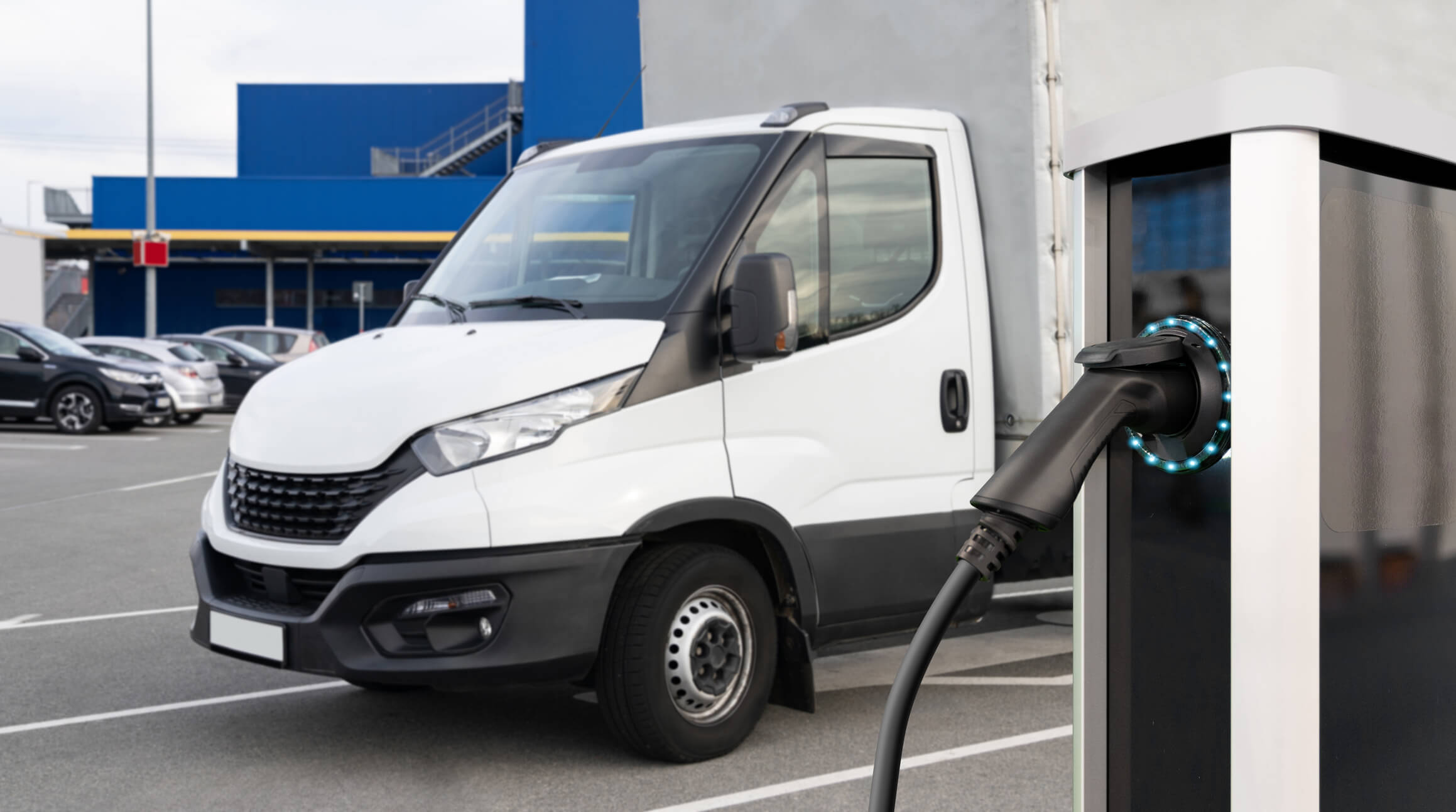In the actively changing landscape of transportation, the electrification of fleets has emerged as a pivotal step towards a sustainable and clean energy future. Electrification can, in the right applications, help fleets drastically cut emissions, reduce total lifetime operating costs and improve the air quality in and around their communities.
As regulators begin mandating electrification, the projected impact of transportation electrification on our power system will be at a scale that is unprecedented and is only one of the many additions to overall electrification growth. Nationally, electrical grid capacity must grow 60% by 2030 and 300% by 2050 to meet electrification goals, while also transitioning to zero-carbon power. At the same time, utility regulators are concerned about the impact of this massive infrastructure investment on utility rates for all customers.
Understanding the Shift: A Shared Vision
The first step in fostering a productive dialogue is establishing a shared understanding of the transition to electric fleets. Utilities and fleets must align on the anticipated growth, timelines, vehicle charging needs and patterns, as well as geographical distribution of electric vehicles (EVs). This mutual comprehension forms the foundation for strategic planning, allowing utilities to gauge the scale of infrastructure needed to take proactive steps to meet the charging demand effectively.

Power Requirements and Load Management: Collaborative Solutions
As fleet operators embrace electrification and respond to regulatory requirements and timelines, utilities must assess the potential impact on the power grid. Through collaborative studies and data sharing, both parties can gain insights into the specific power requirements, charging patterns and load distribution associated with fleet electrification.
Load Forecasting: Utilities should conduct load forecasting studies to estimate the future electricity demand resulting from fleet electrification. By collaborating with fleets, they can refine these forecasts based on real-world usage patterns. Both near-term and longer-term electrification plans will help utilities plan for the needs of fleet owners and operators and anticipate supply chain timing issues.
Demand Management Programs: Engaging fleet operators in demand management programs helps utilities forecast peak loads by incentivizing charging during off-peak hours. This collaborative approach ensures optimal use of resources and minimizes strain on the grid.
Smart Charging Infrastructure: The deployment of smart charging solutions facilitates communication between utilities and charging stations, allowing for better load management and facilitating participation in demand management programs. Fleets can actively participate in the selection and implementation of these technologies. Smart charging infrastructure will reduce both operational costs (charging off-peak) as well as carbon emissions (charging when renewable energy production is highest).

Infrastructure Funding: Navigating the Financial Landscape
One of the most significant challenges in preparing for fleet electrification lies in securing the necessary funding for infrastructure upgrades. Utilities traditionally rely on rate base funding which often requires a long approval process at the regulatory level. In most instances, they cannot deploy a “build to suit” model when initial investments are recovered as part of a long-term agreement with the customer. This is an area where utility collaboration with fleets can open avenues for innovative financing models that better meet the needs of both parties.
Rate Base Funding: Utilities can work with regulatory bodies to incorporate infrastructure costs into the rate base, enabling them to recover expenses from all customers over time. Historically, this has been a primary funding source for significant grid enhancements. However, in the current regulatory climate, many regulators are concerned about the impact on all utility rates if rate base funding acts as the primary source of financing for expensive infrastructure upgrades. Clear communication with fleets about the financial implications is vital for transparency.
Public-Private Partnerships: Collaborative funding models involving public-private partnerships, specifically joint ventures or multi-stakeholder partnerships, can leverage resources from both utilities and fleet operators. This approach fosters a shared responsibility for infrastructure development without relying on rate base funding. Government entities involved in the partnership, such as municipalities or higher levels, can help streamline the permitting and installation process, thereby accelerating the pace for electrification. For example, the California Public Utilities Commission (CPUC) has invested in a $1 billion transportation electrification program to promote EV adoption and infrastructure.
Government Incentives: Utilities and fleets can collectively advocate for government incentives and grants to support electrification initiatives. Participating in joint advocacy efforts will more effectively demonstrate the value of publicly funded programs and help inform elected officials about areas where further investment can have the most impact. Many agencies also offer opportunities for public input when designing funding programs that will incorporate community benefits. Stakeholder engagement with staff at town halls and listening sessions, or providing comments through requests for information, can lead to programs that are better aligned with industry needs. Such initiatives can lead to collaborative efforts between fleets and utilities, which pave the way to higher rates of EV adoption and optimization of EV charging infrastructure.
A prominent example of this is the Joint Electric Truck Scaling Initiative (JETSI), a region-wide effort led by South Coast Air Quality Management District (SCAQMD) in partnership with Southern California Edison (SCE), the primary utility of the region. The project involves the deployment of 100 Class 8 battery-electric trucks (BETs), complemented by 35 heavy-duty chargers at two charging sites. Aside from providing $5 million in funding for the project, SCE is involved in performing engineering services, developing site design plans for charging infrastructure, upgrading distribution electric service as needed and other integral forms of assistance to ensure JETSI’s success.

Strategic Planning for a Sustainable Future
The strategic dialogue between utilities and fleet operators is not just about meeting immediate needs; it’s about planning for a sustainable and scalable future. This ongoing conversation should include considerations for technology advancements, grid resilience and the integration of renewable energy sources.
Technology Integration: Exploring and implementing advanced technologies, such as distributed generation, mobile energy storage, and grid management software, enhances the efficiency and reliability of the power grid. Collaborative efforts ensure that these technologies align with the evolving needs of both parties.
Grid Resilience: Electrification of fleets further increases the focus and need for grid resiliency. As the grid undergoes transformations, joint efforts in resilience studies and cyber security risk assessments are crucial. This ensures that the electrified transportation ecosystem remains robust in the face of disruptions.
Renewable Energy Integration: The transition to electric fleets presents an opportunity to integrate renewable energy generation in locations adjacent to rising EV loads. Utilities and fleet companies can collaborate on strategies to incorporate solar or wind energy into new charging infrastructure.

TRC Can Help
For 50 years, TRC has been a trusted partner to the utilities, government agencies, municipalities, and businesses seeking solutions to complex energy issues. Today, our experts guide our clients through every step of the evolving transition to more efficient, low-carbon energy systems with grid, program and digital solutions from design and engineering to construction, compliance, research, planning, evaluation, customer support and continuous improvement. As the energy landscape continues to shift, we are committed to delivering transformative change across all industry sectors, including transportation. Through the recent acquisition of GNA, our experts deliver full-service consulting, funding, and engineering solutions for advanced transportation technologies, clean fuels, and sustainable fleet initiatives.
GNA’s sustainable transportation expertise, combined with TRC’s deep energy industry expertise, enduring utility relationships, utilization of cutting-edge digital and technology solutions and unparalleled engineering, regulatory, environmental and climate consulting capabilities can help you accelerate the zero-emission vehicle transition. Together, we bring new capabilities and broader support to our clients and utility partners as they address the challenges of fleet electrification.
Learn about our Clean Transportation, Advanced Energy, and Intelligent Grid Solutions or contact us for more information.



